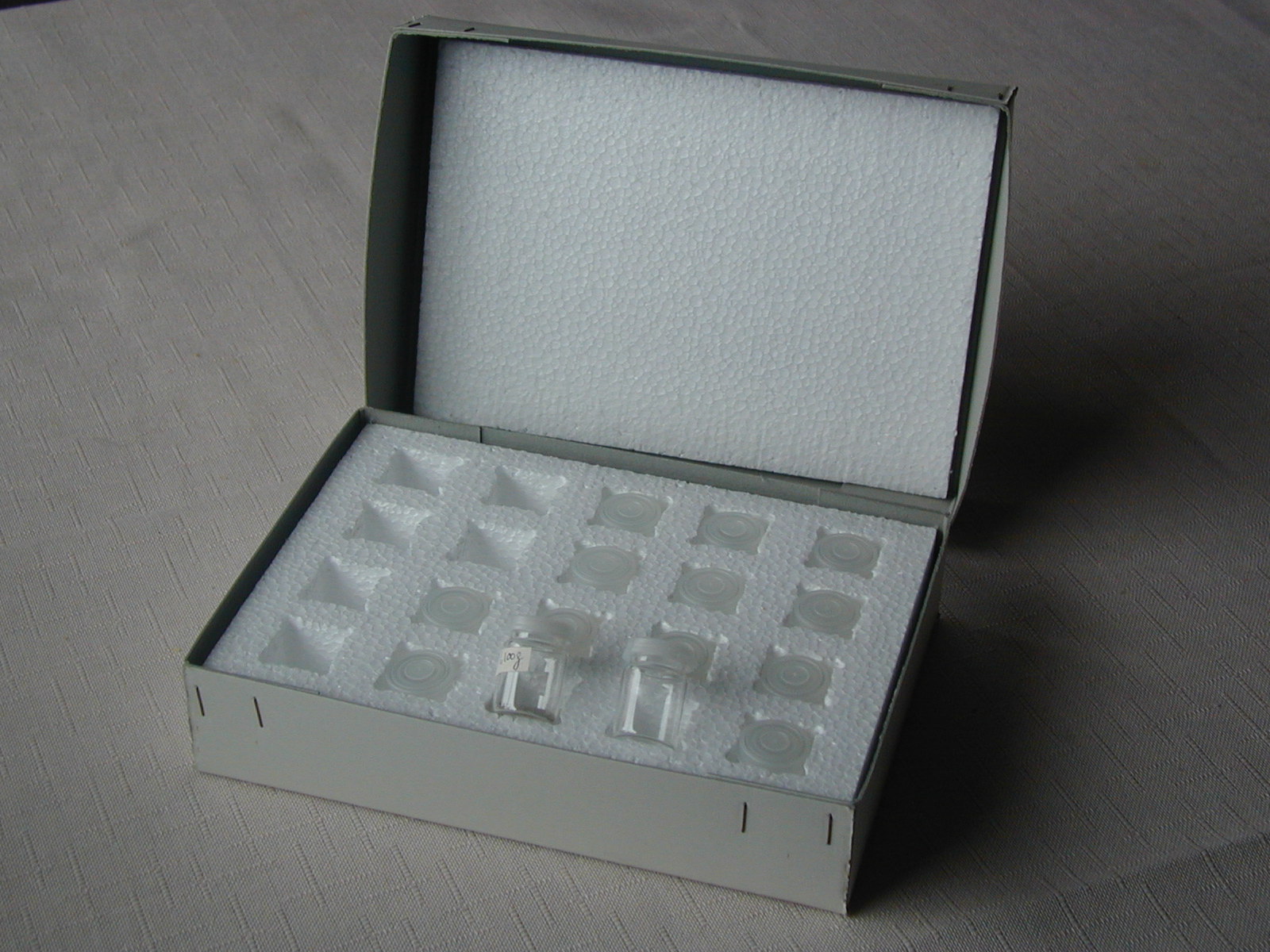
Advanced Sedimentational Analyses of Sand -
|
The major advantages of our Analyzer are as follows:
| accuracy | repeatability | resolution | |
| PSI sedimentation velocity, PHI grain size & other log2 variables (see below) | 0.1 | 0.05 | 0.02 |
| Weight frequency | 0.5 % | 0.05 % | 0.01 % |
Variable SF' determination.
Having the measured PSI-sedimentation velocity
distribution defined mathematically by the parameters of a mixture of up to 5
Gaussian components, our SHAPE™
can match the PSI-values of the distribution to the PHI-values of similarly
defined precise sieve grain size distribution: the identical distribution values
each identify the values of the PSI-PHI couples. From these couples at 0.02 PSI
steps, the SHAPE ™computes
to each PSI-PHI couple the pertinent SF'-value. The resulting SF' table can then
used by our GRM™ software
to analyze the samples of a similar material (with a similar SF'-PSI-PHI
relationship) as precision sieving
would. A sedimentological
interpretation of the SF' distribution should be taken with a great care because
it includes both the sieving and MacroGranometer's errors.
Our analyses have been successfully used for unique applications (click).
With our analyses, the following operations are included:
Normally, we do not perform any other preparation of your samples for our analysis. Please take care that your representative samples are:
Clean means that the samples must be free of substances that cannot be analyzed:
finer particles (clay and silt) - wash them out on a 0.0625 mm (=4 PHI) screen (avoid damaged sieves with enlarged holes)
coarser particles (gravel) - remove them on a 4 mm (=-2PHI) screen,
salt & other solubles - washed them out (usually together with the fine particles on the 4-PHI screen),
organic matter - remove it by boiling in hydrogen peroxide.
Samples in small portions mean that the quantity of
your samples should allow us to split them just into about four to ten
representative sub-samples.
The following sample sizes of
well sorted
sands are recommended:
| minimum particle size | analyzed sample size | your sample size |
| 0.06 mm*) | 0.3 gram | 3 gram |
| 0.1 mm*) | 1 gram | 10 gram |
| 0.2 mm | 2 gram | 20 gram |
| 0.5 mm | 5 gram | 50 gram |
*) Samples with this minimum particle size may be also "poorly sorted": their size is larger - see below.
Poorly sorted sands (containing both fine and course particles) should be sent in about two to three times larger sample weights.
Please send us your samples
weighed (in grams to two
decimal digits) and well identified. Use clearly printed numbers on each bag or
sample jar.
We will gladly send you our sample jars in a light-weight
polystyrol packaging, each for 20 samples:

Provide us a list of your samples as a table with the following information:
| # | Sample Name 1 | Sample Name 2 | Sample Number | Sample Weight | Grain density | Shape Factor | DVar*) |
*) DVar = the required distribution variable such as PSIstandard, PSIlocal, PHI, etc..
Sample Names 1, 2, and Sample Number are optional. We can include your descriptions (geographic location, borehole identification, depth, core number etc.) of up to 15 characters each. They will appear in the protocol of each analysis.
Sample weight (to 2 decimal digits of gram). After a brief microscopic evaluation, we'll determine the number of subsamples we will produce from your original sample for our analysis, possible repeats, and documentation (we store the unused subsamples 1 year).
Grain density is usually 2.65 (to 2.70) g/cm3 for quartz and calcite grains.
Shape Factor (defined by A. T. Corey, 1949, and independently by McNown & Malaika, 1950) is usually 0.65. Theoretically, SF of spheres is 1.0. However, sedimentation velocity of smooth spheres provides the values of SF' = 1.18, whereas the SF value of 1.0 corresponds to rough spheres and other isometric particles, including cube.
We recommend to use the SF value 0.65 valid for the most common naturally worn sand particles as a standard instead of the shape of spheres (whether smooth or rough).
Of course, we can compute the results to any grain shape, upon wish.
PricesTo convert our EURO prices into your currency, click here. |
| *) Current US-Dollar price is by Oanda classic converter as per 21 March 2011r | € (EUR) | US$*) |
| Standard Sedimentation Analysis each (minimum of 10 samples) | 49.00 | 70.00 |
VISA and MasterCard accepted.
Is your budget stretched to the limit for our instrument this year? Waste neither money nor time by purchasing an "inexpensive" solution, and do not wait. Use our services now:
we will perform the analyses for you, and, if you wish, you may apply 50% of the cost of our service up to one year as a down payment toward purchase of your MacroGranometer. Click here to determine your qualification for this option.
Interested in more savings?
Enjoy a higher quantity discount: increase the number of analyses by combining orders with other co-operating institutions.
Enjoy our student discount: contact us for details.
Please
email
 your wishes
to GranoMetry.
your wishes
to GranoMetry.
You are visitor number
since July 17, 2000